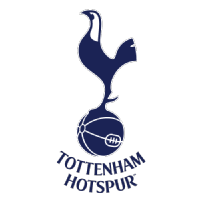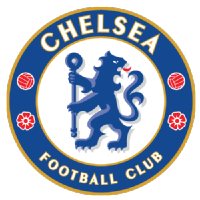
How Consistent Was Every Premier League Lineup This Season?
What our newest metric STABLE can tell us about Arsenal’s surprising title challenge and Chelsea’s face-plant.
Before the 2022-23 Premier League campaign kicked off, there was a buzz around St. James’ Park that hadn’t been felt in quite some time: optimism. After years of bottom-half finishes, relegation scraps and mediocrity, it finally felt like Newcastle United was building a team its fans could believe in.1And all it took was a takeover by Saudi Arabia's Public Investment Fund, emblematic of a sportswashing trend that the Premier League has been facing (or ignoring) for years. Driven by a cohesive and formidable defensive unit — a four-man back line and goalkeeper who played more than 76 percent of the season’s minutes together2All numbers in this article are as of 9 a.m. ET on May 30, 2023. — the Magpies more than delivered, blowing away their most bullish expectations to earn a top-four finish and a place in next year’s Champions League.
To evaluate the consistency of Newcastle’s squad, along with every other Premier League team this season, we created a new metric called STABLE (Similarity of Teams And Balance of Lineups across Every match) that tells us how similar each team looked every time it took the pitch. A team whose starting lineups and substitutions stayed exactly the same for every match would have a STABLE score of 100 percent, while a team that switches its entire lineup from one match to the next would earn a 0 percent. Looking at a team’s season through this lens, especially in comparison to its performance on the pitch, can tell us something about its cohesiveness (see, for instance, Newcastle’s stalwart defensive back line), strategy (like Pep Guardiola’s constant rotation of Manchester City’s starting 11) and luck (yet another injury-riddled Liverpool season).
Consistency has put Arsenal and Newcastle ahead of schedule, with Chelsea lagging way behind
Points earned per match relative to FiveThirtyEight’s preseason forecast and STABLE score for Premier League teams in the 2022-23 season
The two most consistent teams this season by STABLE, Arsenal and Newcastle, just so happened to be the two biggest overperformers, based on actual points earned per match versus predicted points per match from our preseason forecast. But there isn’t actually a tidy relationship between consistency and success.3More so than in the 2022-23 season, there is a weak relationship (at best) between STABLE and overperformance in the 2020-21 and 2021-22 seasons. Teams could have relatively steady squads that drop points match after match (sorry, Everton supporters). And there were many reasons clubs found themselves on the inconsistent end of the STABLE spectrum. For the richest clubs with deep rosters, inconsistency could be more of a feature than a bug. Ever-changing lineups could also point to a team devoid of any cohesiveness, struggling to establish who its best squad really was — or a team that simply suffered lots of injuries and bad luck. And in the worst-case scenario, it could signal all these at once (here’s looking at you, Chelsea).
But while we can’t just look at a team’s STABLE metric and see evidence of a good or bad year, it can still tell a story. By visualizing each team’s lineup throughout the year, we created a unique fingerprint for each club that offers nuanced detail about a team’s identity and its season.
Which Premier League teams were the most consistent?
STABLE score and match-by-match squads for Premier League teams in the 2022-23 season
How to read this
 Arsenal86.8%STABLE
Arsenal86.8%STABLE
 Newcastle85.0%STABLE
Newcastle85.0%STABLE
 Everton84.4%STABLE
Everton84.4%STABLE
 Aston Villa83.2%STABLE
Aston Villa83.2%STABLE
 C Palace82.9%STABLE
C Palace82.9%STABLE
 Brighton82.5%STABLE
Brighton82.5%STABLE
 Fulham82.4%STABLE
Fulham82.4%STABLE
 Brentford81.3%STABLE
Brentford81.3%STABLE
 Leeds80.7%STABLE
Leeds80.7%STABLE
 Tottenham80.4%STABLE
Tottenham80.4%STABLE
 Bournemouth79.7%STABLE
Bournemouth79.7%STABLE
 Leicester79.3%STABLE
Leicester79.3%STABLE
 Nottm Forest78.8%STABLE
Nottm Forest78.8%STABLE
 Wolves78.7%STABLE
Wolves78.7%STABLE
 Man United78.1%STABLE
Man United78.1%STABLE
 West Ham77.6%STABLE
West Ham77.6%STABLE
 Southampton76.5%STABLE
Southampton76.5%STABLE
 Liverpool75.9%STABLE
Liverpool75.9%STABLE
 Man City72.7%STABLE
Man City72.7%STABLE
 Chelsea67.9%STABLE
Chelsea67.9%STABLE
Let’s zoom into a few of these charts to take a closer look at what these fingerprints can tell us about specific squads and players this year. First up is Arsenal, whose consistency helped the Gunners outperform expectations and mount a surprising (but failed) title challenge.
 Arsenal86.8%STABLE
Arsenal86.8%STABLE
Arsenal Football Club entered the season aiming to earn a top-four spot and return to the Champions League after six years away. So while ending such a promising season without a trophy after spending almost the whole campaign at the top of the table will be brutally disappointing for the Gunners, any reasonable supporter4There are some reasonable Arsenal supporters out there, right? would’ve given you a resounding “yes” if you asked them at the beginning of the season if they would take a second-place finish.
Much of their reemergence can be attributed to a sense of stability and identity Mikel Arteta has developed within a tight, cohesive nucleus of young and talented players. Goalkeeper Aaron Ramsdale and center back Gabriel only missed a combined nine minutes across all Premier League competitions.5Gabriel was subbed out for Jakub Kiwior in the 86th minute of their win against Crystal Palace on March 19, and for Rob Holding in the 85th minute of their win against Chelsea on May 2. Starboy winger Bukayo Saka was an almost permanent fixture in Arsenal’s front line and has developed into one of the league’s best playmakers — only he and Liverpool forward Mohamed Salah registered double-digit goals and assists in the Premier League this season. And captain Martin Ødegaard showed remarkable leadership, calm and dynamism in the ever-important midfield. In Arsenal’s 38 matches, Arteta used only 22 unique starting 11s, the lowest figure in the league.
The biggest shake-ups to Arsenal lineups came through injury — most notably to striker Gabriel Jesus, who missed 12 matches after sustaining a knee injury during the World Cup, and center back William Saliba, who had been out since suffering a season-ending back injury on March 16. Arteta employed a next-man-up approach to steady the ship, slotting Eddie Nketiah and Rob Holding in the starting 11 for long stretches,6Nketiah started and played the full 90 minutes in the first nine matches without Jesus while Holding started and played the full 90 minutes in the first six matches without Saliba. minimizing the impact on Arsenal’s STABLE score. Arsenal will probably need to upgrade their roster and build depth over the summer if they want to challenge for trophies next season, but their small and close-knit squad had outpaced expectations this year.
 Manchester City72.7%STABLE
Manchester City72.7%STABLE
Manchester City are top of the Premier League once again, winning their fifth title in six years after spending the vast majority of the season behind Arsenal.7For much of that time, though, City eventually passing Arsenal had a Thanos-like feeling of inevitability. City finished the season with the league’s second-lowest STABLE score, at the opposite end of the spectrum as the Gunners. Their lack of consistency is a concerted strategy by manager Pep Guardiola, who constantly rotates lineups from one match to the next — so much so that fans refer to the challenge of predicting his starting lineup as “Pep roulette.” In 38 Premier League matches this season, Pep used 37 unique starting 11s.
Manchester City had the luxury to use fluid, ever-changing lineups because of their incredibly deep roster of all-world talent. Seemingly endless wealth from Emirati owner Sheikh Mansour and years of sustained success have made City an attractive destination for star players looking to win at the highest level, most recently Jack Grealish and Erling Haaland. Pep moves players who would be regular starters at pretty much any other Premier League club to and from his bench as he sees fit, keeping them fresh for future matches while keeping opposing tacticians guessing. We’ll see if this strategy finally pays off in Europe as City go for their first Champions League win against Inter Milan on June 10, but it’s been a well-oiled machine domestically as the Cityzens established themselves as a Premier League juggernaut.
 Newcastle United85.0%STABLE
Newcastle United85.0%STABLE
If you’re a Newcastle United supporter, 2022-23 was about as close to a dream season as you could’ve hoped for. Finishing top-four and qualifying for the Champions League is a massive achievement for the Magpies, who hadn’t finished higher than 10th in the Premier League table since the 2011-12 competition (and had even suffered relegation in the 2015-16 season). Newcastle’s overperformance boils down to three main factors: money, player development and defense. Saudi Arabian ownership has flushed Newcastle with cash and they’ve used it adeptly, bringing in talented players in key positions of need like midfielder Bruno Guimarães and forward Alexander Isak. Manager Eddie Howe and his staff also have found a way to make their existing players so much better, elevating the likes of Joelinton, Miguel Almirón and Sean Longstaff into top-level Premier League players.
Newcastle’s tactical success was founded on their defensive unit, which was one of the best in the league — they tied for the fewest goals conceded by any club, allowed the second-fewest expected goals against and tied for the second-most clean sheets. Their core defensive unit of goalkeeper Nick Pope and defenders Kieran Trippier, Fabian Schär, Dan Burn and Sven Botman formed a cohesive and formidable back line. It became rare to see a Newcastle team without them on the pitch — 31 of the Magpies’ 38 starting lineups this season included all five of those players.
 Chelsea67.9%STABLE
Chelsea67.9%STABLE
Conversely, if you’re a Chelsea supporter, 2022-23 was about as much of a disaster as you could’ve imagined. It’s been arguably the most disappointing season in the club’s history, given its lofty aspirations and record-setting spending. Chelsea had finished outside the top six only once since the 1995-96 season — a blip followed by appointing manager Antonio Conte in 2016 and winning the league the next season. But the Blues finished in 12th place, sitting 8 points closer to relegation than they are to the top six.
It was an unthinkably disjointed first full campaign for the new Chelsea ownership consortium that includes Clearlake Capital and Todd Boehly, who employed four different managers8Thomas Tuchel, Graham Potter, Bruno Saltor Grau and Frank Lampard. and spent an astounding €611 million on 17 new players across the summer and winter transfer windows while failing to address the team’s key needs in the short term, especially in front of goal.
Such a massive influx of players in a short period of time bloated the Chelsea squad to the extent that players reportedly had to change in the hallway, sit on the floor in team meetings and split into separate training sessions. What resulted was a team lacking any semblance of identity or cohesion. Compounded by a number of long-term or lingering injuries affecting key players such as N'Golo Kanté, Reece James, Ben Chilwell, Thiago Silva, Wesley Fofana and Armando Broja (just to name a few), Chelsea never figured out a lineup that worked — in 38 matches, Chelsea used 38 different starting 11s. At this point, Chelsea supporters can do nothing more than be relieved that the team avoided being sent down to the Championship and hope that the team shows any sense of identity or improvement next season under new head coach Mauricio Pochettino.
Each club’s fingerprint and STABLE score tells its unique story of the 2022-23 season. Explore each team yourself below and see what their match-to-match lineups looked like this season:

Comments